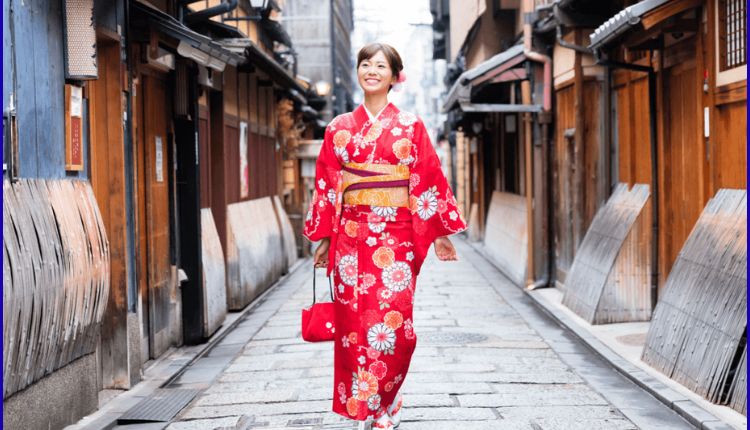Simple in shape but wealthy in meaning, “kemon” serves as a versatile expression for asking about well-being, kingdom, or situation. It frequently translates into English as “how” or “how is”, depending on the context. But past the basic translation, “kemono” represents a deeply ingrained cultural exercise that centres around empathy, care, and human connection.
- Linguistic Origins and Usage of “Kemon”
- Emotional and Cultural Weight of “Kemon”
- Variations and Contextual Meanings
- “Kemon” in Bengali Literature and Media
- Social Media and the Digital Evolution of “Kemon”
- Psychological Implications of Asking “Kemon”
- Teaching “Kemon” to Non-Native Speakers
- Wrapping It Up
Linguistic Origins and Usage of “Kemon”
The starting place of “kemon” may be traced back to classical Bengali and Sanskrit roots, wherein it advanced via the literary and spoken traditions of Bengal. In day-to-day language, it is utilised in questions like “kemono acho?” (How are you?), “kemono lagche?” (How does it experience?), or “kemono holo?” (How did it go?). The phrase seamlessly fits into both formal and casual conversations, making it a linguistic staple for the Bengali audio system.
Its use isn’t limited to at least one demographic or age group. From kids to elders, absolutely everyone makes use of “kemono” as a manner to initiate verbal exchange or take a look at what’s going on with a person’s country. Whether utilised in a casual setting between friends or in a greater solemn context, like asking about someone’s health or emotional well-being, the word consists of a real feeling of care.
Emotional and Cultural Weight of “Kemon”
In the Bengali way of life, greetings frequently go beyond simple acknowledgements and delve into non-public being. When a person asks “kemono acho?” it isn’t always a rhetorical question; however a genuine inquiry about one’s bodily, intellectual, or emotional condition. This cultural addiction to checking in through language forms a part of the collective empathy that characterises Bengali society.
Family gatherings, social interactions, or even quick exchanges on the road frequently start with “kemon”. It creates an ecosystem of warmth and sincerity, displaying that even in passing conversations, there’s space for emotional expression. The repetition of this phrase in day-to-day lifestyles continues the focus on human connectivity, reminding people of their shared stories and mutual issues.
Variations and Contextual Meanings
While “kemon” in a general way means “how”, its complete implication relies closely on context. For instance, in a romantic setting, “Tumi kemono lagcho” (How do you look?) may be a praise, at the same time as in an expert meeting, “Kajta kemono holo?” (How did the work pass?) implies a focus on outcomes or effects.
There are also local and dialectical variations of “kemono”. In a few elements of Bangladesh and West Bengal, special tones or associated phrases may additionally slightly alter the nuance. For example, “kemono kore?” should imply “How did it happen?” or “How do you do it?” These versions replicate the adaptability of the phrase to special social, emotional, and situational dynamics.
“Kemon” in Bengali Literature and Media
Bengali literature has regularly celebrated easy words like “kemono” for his or her poetic and emotional power. Writers, along with Rabindranath Tagore and Kazi Nazrul Islam, have used such expressions in their poetry and prose to add depth to their characters and narratives. In modern-day literature and movies, dialogues starting with “kemono” are commonplace, growing instant relatability with the target market.
Television dramas, radio packages, and tracks have additionally embraced the word. Song lyrics regularly include traces like “Tumi kemono acho” (How are you), evoking nostalgia or romantic longing. Its utilisation in artwork not only effectively showcases its ubiquity but additionally demonstrates how language and emotion are tightly interwoven in Bengali tradition.
Social Media and the Digital Evolution of “Kemon”
In the digital age, the word “kemon” has found a new home on social media structures, textual content messages, and online forums. Emojis, memes, and posts frequently encompass variations like “kemon acho bro?” or abbreviated bureaucracy like “kmn”, mainly among younger users. This evolution keeps the phrase alive and relevant, even as the language around it turns more digital and shorthand-orientated.
Online communities, specifically a few of the Bengali diaspora, hold to apply “kemon” as a linguistic bridge between lifestyle and modernity. It allows preserving cultural ties, enabling humans far from their domestic to sense being linked through a single, familiar word. Whether it’s a WhatsApp message from a distant or a Facebook comment from a friend, “kemon” maintains to hold emotional weight within the virtual international.
Psychological Implications of Asking “Kemon”
The act of asking a person “kemon acho” is going beyond social etiquette; it additionally serves as a psychological touchpoint. It indicates concern and gives a gap for talk. This is mainly valuable in societies where intellectual fitness conversations are nevertheless emerging. A simple “kemon” can cause deeper discussions and emotional launch and assistance, particularly when someone is going through a tough time.
In remedy and counselling contexts, native speakers may find consolation in being asked “kemon acho” in their mother tongue because it invokes familiarity and warmth. This, in addition, emphasises the role of language in emotional healing and social bonding.
Teaching “Kemon” to Non-Native Speakers
For a non-Bengali audio system interested in mastering the language, “kemon” is often one of the first words taught. Its practicality and emotional resonance make it a foundational element in conversational Bengali. Language teachers emphasise it’s more than one making use of it and the cultural nuance that comes with it.
In language exchange applications and cultural immersion settings, the word allows us to smash the ice and fosters faster interpersonal connections. Non-native audio system users regularly find pleasure in studying “kemon,” as it usually earns them a hearty smile or maybe a meaningful conversation when used with native speakers.
Wrapping It Up
“Kemon” is some distance greater than a question phrase—it is an embodiment of care, interest, and cultural connection. It represents how language may be used to forge emotional ties and preserve human relationships. Whether spoken on a bustling Kolkata road or typed in a quiet chat from Dhaka, the word carries a long-lasting significance.
In a world that frequently moves too fast for meaningful interaction, “kemono” reminds us to pause and connect with others and with ourselves. It urges us to be more human, to pay attention more carefully, and to care a bit deeper. And possibly that is its greatest power.





